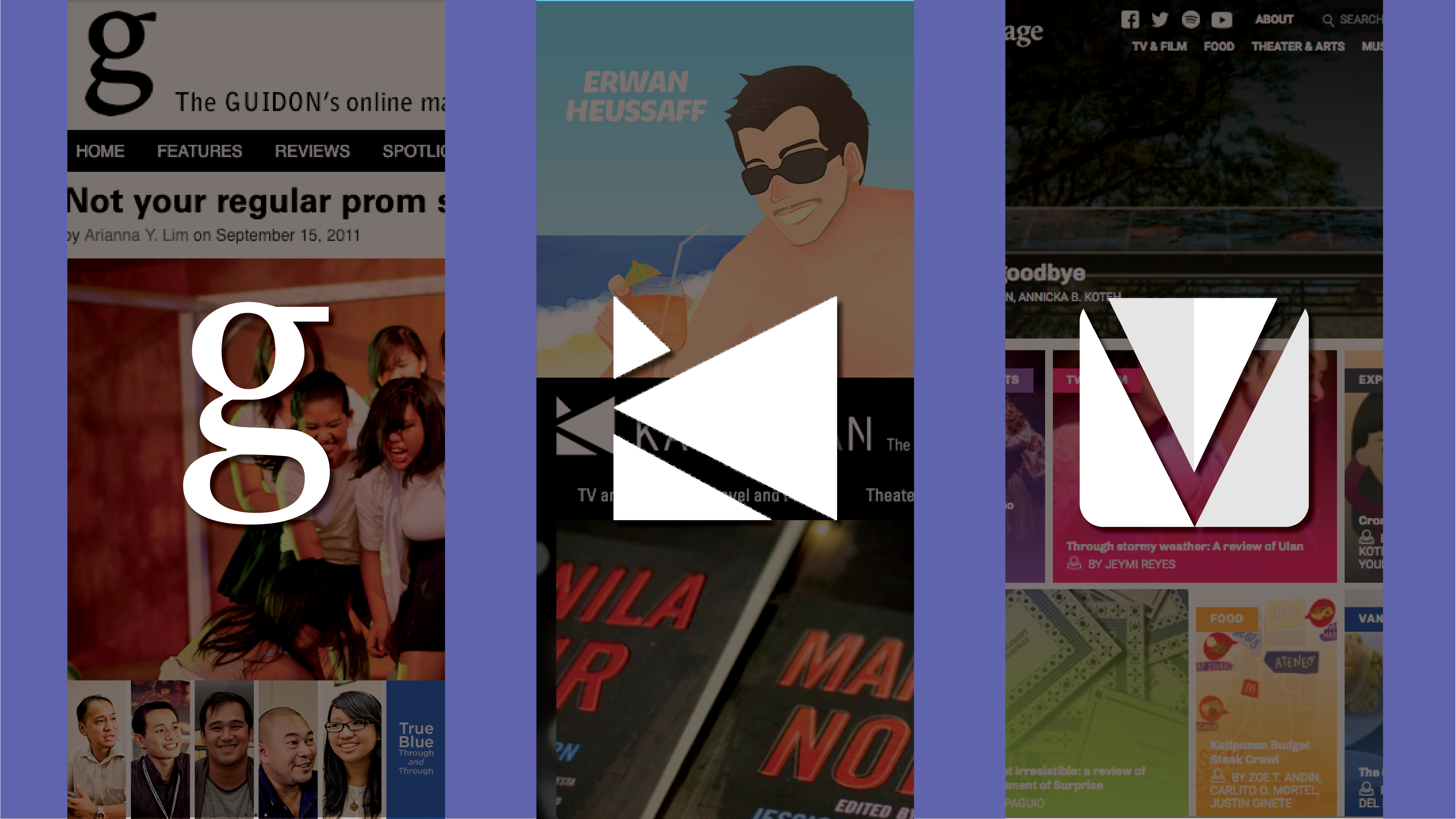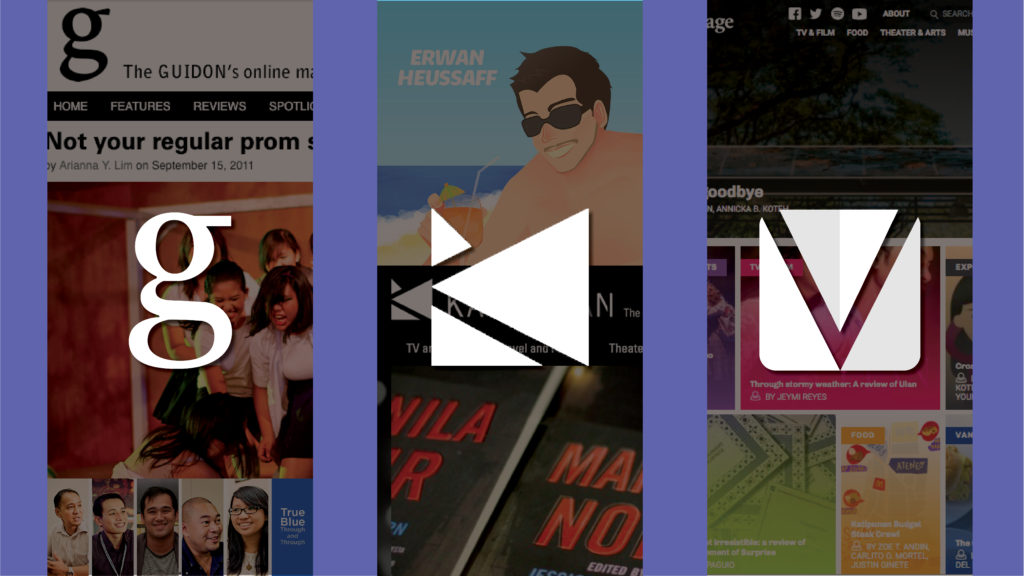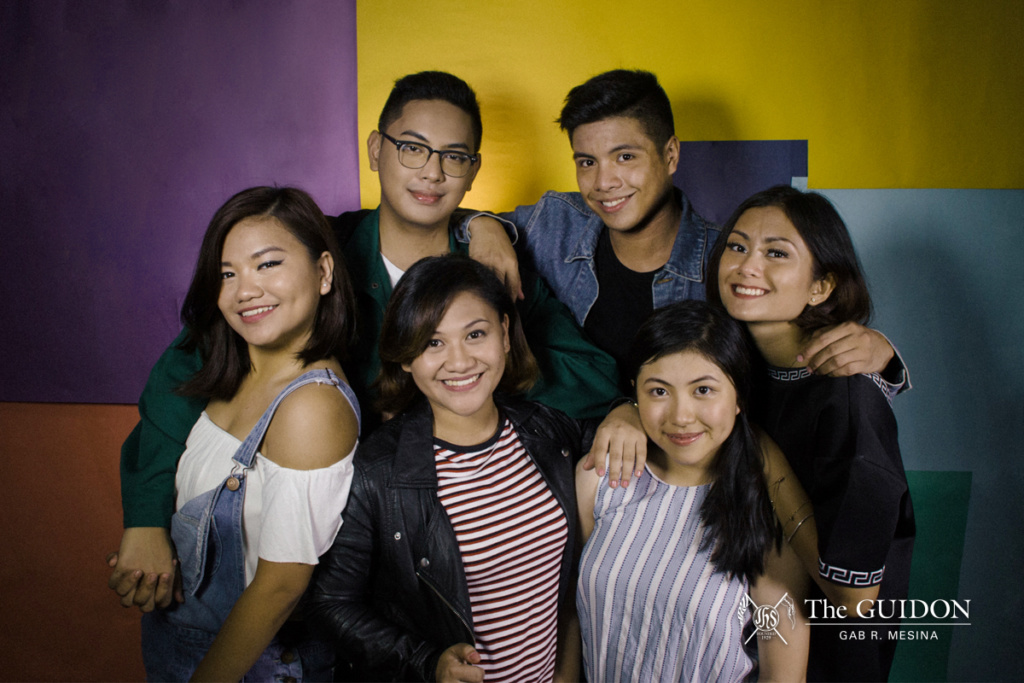The question of a campus publication’s relevance persists regardless of its age. As The GUIDON ushers in its 90th anniversary, one then wonders how it asserts itself in this era of modern multimedia journalism. Its answer is to holistically chronicle histories within and beyond the Loyola Schools: To not only report facts about socio-political issues, but to understand the lives affected by them. As such, the publication’s soft news staffs—Features and Vantage Magazine—train their focus on the human experiences that shape today’s societal issues and trends.
Vantage, in particular, brings socio-cultural narratives closer to the youth. Through multimedia platforms, the online magazine strives to make cultural commentary more accessible and engaging. In this way, Vantage relates culture to the everyday Atenean and asserts the relevance of 21st-century journalism. The publication has since found a voice for both entertainment and nation-building amid its various setbacks and successes.
In 2019, Vantage celebrates its fifth year since transitioning to the publication we know today. Whether it was called g Magazine or Katipunan Magazine, Vantage’s mission has remained the same: To represent the Ateneans of today—whoever they may be—through innovation within changing societal contexts.
From the ground up
The earliest predecessor of today’s Vantage Magazine is alt+g, a website that published articles, forums, quotes, and polls. alt+g launched in 2005 and remained active until May 2008. After three years, alt+g was then rebranded as g Magazine. g Magazine published bi-monthly online stories, highlighting topics in film, music, and lifestyle, among others.
g Magazine underwent another reconstruction before launching as Katipunan Magazine in 2012 under the leadership of Apa Agbayani (AB COM ’14). The change was prompted by then Editor-in-Chief Luther Aquino (AB PH ’13), who felt that g Magazine lacked its own identity and had to refine its direction. Agbayani thus reintroduced Katipunan Magazine as a source of cultural commentary alongside The GUIDON’s print Features section. But to him, the difference had to lie in more than just the mediums of presentation.
Unlike g Magazine’s more general blog-style scope, Katipunan Magazine steered itself towards local pop culture—a topic which Agbayani felt was hardly covered by collegiate publications. “I feel like I saw that lack, which was why we reviewed albums, plays, movies,” he says. In his eyes, those reviews, analyses, and thinkpieces were “starting points” for many former GUIDONeers who eventually ventured into professional journalism. “Some of the people writing for publications now—like Young STAR and CNN—were writers for the online magazine.”
Agbayani and his successor Chino Cruz (AB COM ’14) made full use of the digital medium to kickstart new projects. There was the 24-Hour Song Challenge, in which bands would write, record, and release a song in a day while a staff writer would livetweet the whole process. Never the Strangers released Extinction (2012), while Imelda came out with Inheritance (2014) as a product of the challenge. It was also during this period that the Pub Room Sessions video series began. Here, artists would play short sets and answer quick questions in The GUIDON’s cozy headquarters.
“We had BP Valenzuela [and] Mateo Escueta [for Pub Room Sessions],” Agbayani says. “It was really a refreshing time to be working in The GUIDON because it was right at that time when there was a big conversation on: ‘Is it the death of print?’” This focus grounded the direction of Katipunan towards developing content across various multimedia platforms and further diversified The GUIDON’s means of delivering news.
However, trials and tribulations are bound to arise from exploring uncharted territory. For Katipunan, this came in the form of a lawsuit in 2012 over the magazine’s name. The lawsuit sought to trademark Katipunan Magazine as the title of a previous offshoot print publication that was released from 2005 to 2007. Aquino, Agbayani, and the other opposers eventually won the case in 2016—but by then, Katipunan Magazine had already said goodbye to make way for a new identity.
Relearning the ropes
The distant and seemingly pretentious tone of Katipunan Magazine, along with the lawsuit, prompted AY 2014-2015 editor Santiago Arnaiz (BS LM ’16) to rebrand the publication once more. Arnaiz, along with the Editorial Board, felt it necessary to transform Katipunan Magazine into a more approachable and less detached platform. The rename was a huge undertaking for the former Editorial Board—a change that came out of “a three-day bender of just meetings and sleep deprivation,” as Arnaiz fondly recalls.
“Someone came up with ‘Vantage,’” Arnaiz continues. “The idea of it being Ateneo culture from the point of view of the Atenean.” Arnaiz’s goal was to have Vantage “document Ateneo culture in real time.” Off the bat, he pioneered the magazine’s annual coverage of the freshmen Orientation Seminar (OrSem). The OrSem livetweet, which covers the University’s biggest student-led event, is still referred to as an exhausting but rewarding “baptism of fire” for many new Vantage staffers. But at the magazine’s inception, today’s protocols were merely ideas yet to be tried and tested.
“I will say that it was very bootstrappy at the start,” Arnaiz recalls. OrSem, to him, seemed easy enough to tweet about in its entirety—until he and his staff attempted to do so. “[Then I] was just dying every five minutes,” he continues, “because I had to come up with another version of ‘Now they’re dancing the OrSem dance again.’”
Nonetheless, Arnaiz looks back on these hiccups as crucial learning experiences. “Nothing was a mistake, everything was an experiment,” he adds. The insights gained, after all, helped refine The GUIDON’s livetweeting protocols from then on. Coverages were streamlined to capture an event’s highlights—lest staffers themselves got lost in tweeting about the most repetitive parts of a lengthy program.
These improvements pushed Vantage to keep taking creative risks, though at one point, the experimentation went a little too far. In 2014, the magazine released a video entitled Vantage eats Kebabers. What was intended as a BuzzFeed-type taste test ended up being a total rampage on the Mediterranean fast food joint along Katipunan. The feature, chock-full of insults rather than nuanced culinary criticism, drew intense backlash. “It was a monumental failure in communication, assessing tone, and a mess all in all,” Arnaiz admits.
The video was quickly taken down, but its lessons have lived long within the publication. Vantage eats Kebabers is a cautionary tale to this very day—one rightfully passed down through generations of Vantage staffers. “We figured out that the only way to critique culture,” Arnaiz says, “is to first come from a place of respect.”
Working in the now
Vantage grounds itself on a healthy respect for culture and its creators. Yet, as a lifestyle publication, the challenge is to show why culture is still worth covering in an increasingly turbulent political era.
“The role that the online magazine played, to put it in a metaphor, is ‘This is what I like about being Atenean,’” Arnaiz explains. “What that means is I’m socially conscious. I’m inquisitive. I interrogate things.” Whether through food, film, art, music, or whatnot, Vantage was created as an intersection of what Ateneans already cared about and the issues that they should care about.
Within and long after Arnaiz’s term, the magazine has shed light on topics like local film festivals, the racial histories behind rap, social enterprises, and protest art, among many others. Agbayani calls it the work of “cultural commentary,” of “documenting living histories.”
“There is a way to tackle serious issues in an interesting way, a subverted way,” he continues, “that no other section or platform can do but the online platform.” That sentiment is clear from Vantage’s top two videos to date: Accounts of students struggling with mental health and an analysis of the humble ukay-ukay.
From g Magazine’s venture into the online sphere, to Katipunan Magazine’s coverage of emerging talents, to Vantage as it is now, the publication has had a history of innovative bravery. Whatever its name, Vantage has tried to reach readers where they are by changing with the times. Arnaiz says as much when asked about his takeaways from Vantage editorship—and he zeroes in on why the magazine’s spunky journalism has been a welcome addition to The GUIDON’s 90-year legacy.
“[I used to think], ‘I don’t know if I’m going to do things better, but I’m going to do them different,’” he recalls. “Because the only way for things to become better is if they’re constantly being done differently.”
Graphic by Neil R. Reyes
Editor’s Note: Luther Aquino’s graduation year was originally listed as 2012. We apologize for this oversight, and have corrected it to 2013.






